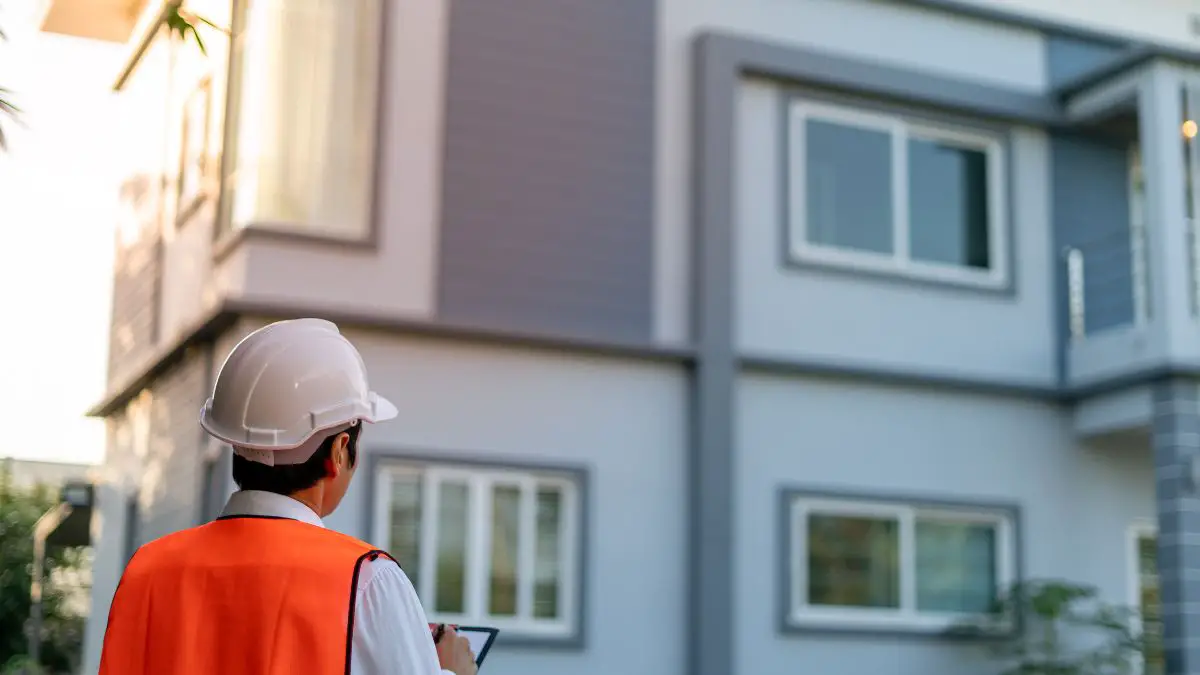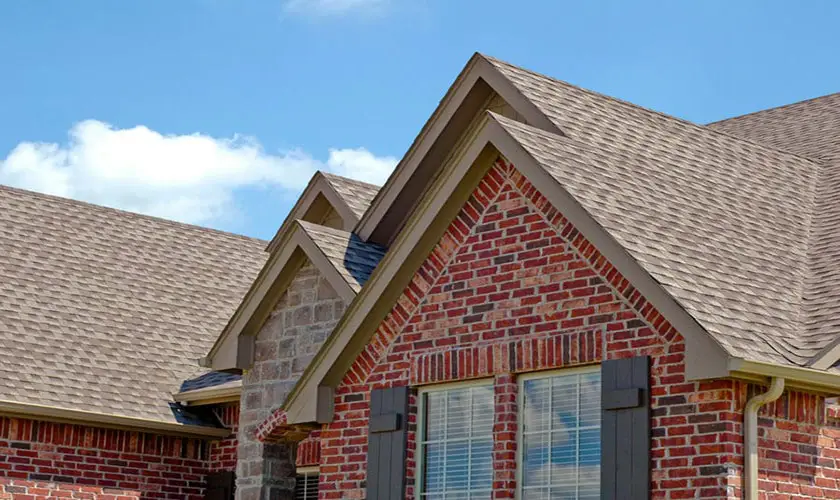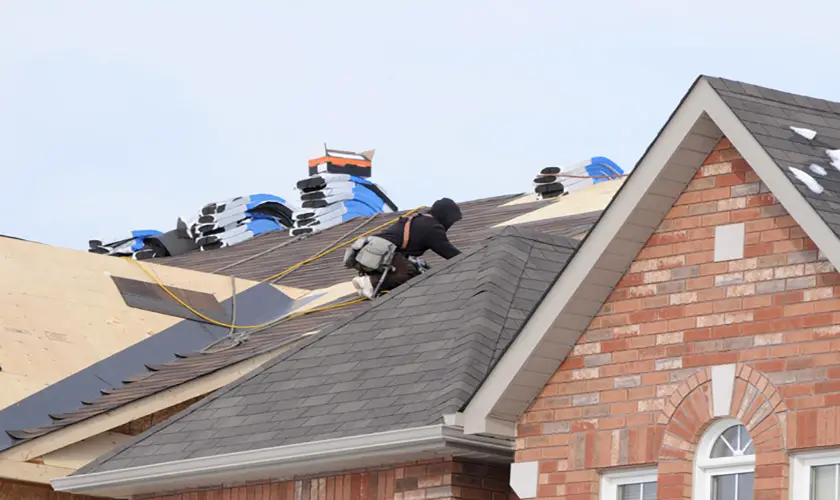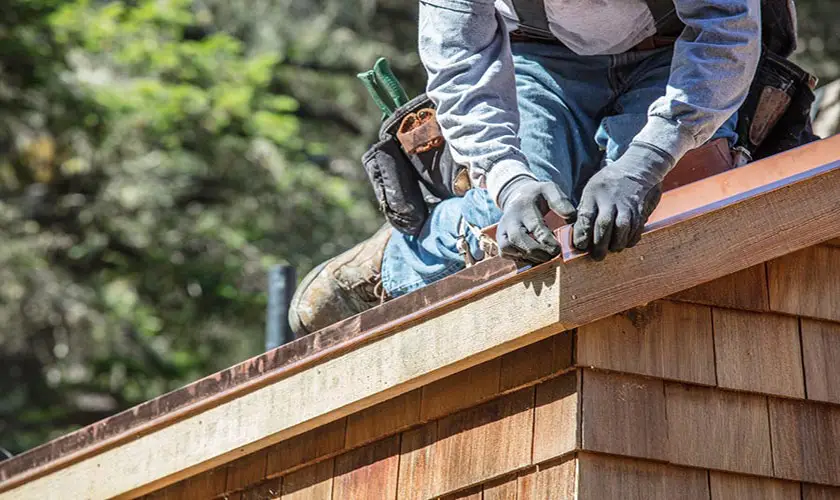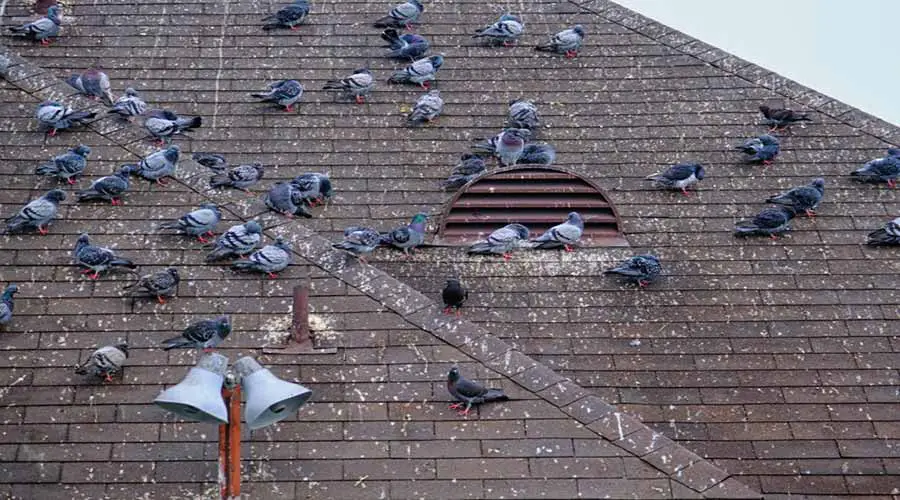
Many homeowners opt to get cedar wood for their homes because of how well it looks for their home’s curb appeal. Before investing in such luxurious lumber, you may have many questions. Understandably so.
These questions might be what regular maintenance goes into the home and the overall best siding for your home. However, the first question that you should ask is how long cedar siding lasts?
Cedar siding in itself lasts anywhere between 20 to 40 years, depending on the type of cedar used and if you maintain it well.
If you invested in cedar shake siding, for example, then you are looking at a 20 to 40-year lifespan.
On the other hand, untreated cedar wood will slowly begin to rot after 5 years. In that case, it may be best to invest a bit more so you can save yourself a headache in the future.
Keeping in step with that, let us dive into how you can maintain cedar siding and how to know when you will need to replace it.
This article will provide you with a lot of the required information, so keep reading.

Cedar Siding: How Long will it Last?
As stated above, cedar siding lasts anywhere from 5 to 40 years.
Of course, it depends entirely on how well you maintain the wood, the type you get, and how the materials are kept up.
Types of cedar siding include:
- Cedar shake siding
- Natural cedar siding (Untreated)
- Painted cedar siding
1. Cedar Shake Siding
Cedar shake siding is more on the pricey side of things ranging from $6 to $12 per square foot. The cost is for installation and materials combined.
If you were to put the shakes on a whole house, it would be upwards of $9000 to $19,000, depending on your home’s size.
If you maintain the cedar shake siding well, it can last between 20 to 40 years.
Some companies offer a 25-year warranty because of how confident they are in their products.
Controlling moisture and wood-destroying insects helps cedar last longer.
To do this, keep the cedar shake siding about 4 inches off the ground and trim the cedar back 1 inch along the roof and sidewall intersections.
Keeping the siding materials elevated prevents wood-destroying insects and moisture from damaging the wood, which can be destructive and lead to a relatively short lifespan.
2. Natural Cedar Siding (Untreated)
In most cases, leaving anything untreated to the outdoor elements is looking for a disaster.
Prolonged exposure to the elements can cause anything from wood rot to a vulnerability within the wood itself, allowing for other detrimental pests such as termites to invade your siding and home by association.
Keeping that in mind, if you purchase untreated wood and do not have an excellent finish to it, expect it to be in good condition for roughly five years after you initially install it.
After those five years are up, you’ll start seeing the cedar wood soften and fade away after five years due to being exposed to the elements or having a baked-in color to it.
So, can Cedar Wood be Left Natural?
You can leave cedarwood in its natural state, but it won’t last as long as treated with stain or clear sealant. However, this does not mean it will completely rot away within that time frame. Cedarwood is a highly durable siding, so it can last a good 30 years even if you leave it untreated.
On the other hand, if you have something made from cedar wood that has contact with the ground, such as a fence, then expect the wood to last roughly 15 to 20 years.
Areas that Untreated Cedar is Your Best Siding Option
Untreated cedar siding may be suitable for an area that does not gather much moisture throughout the year, such as in a desert area, where it hardly rains or snows.
In that case, if you are looking to save money, then this may be a suitable option for you.
Nevertheless, if you live in a region with a lot of snow, rain, or moisture in the air, such as near the ocean or an inland state that rains multiple times a year, then having untreated wood is not the wisest investment and time for yourself.
Overall, you will want a finished cedar wood siding to extend the life expectancy of cedar siding and protect it from the weather conditions within your location.
You can protect natural materials like cedar with water sealers, staining, or painting.
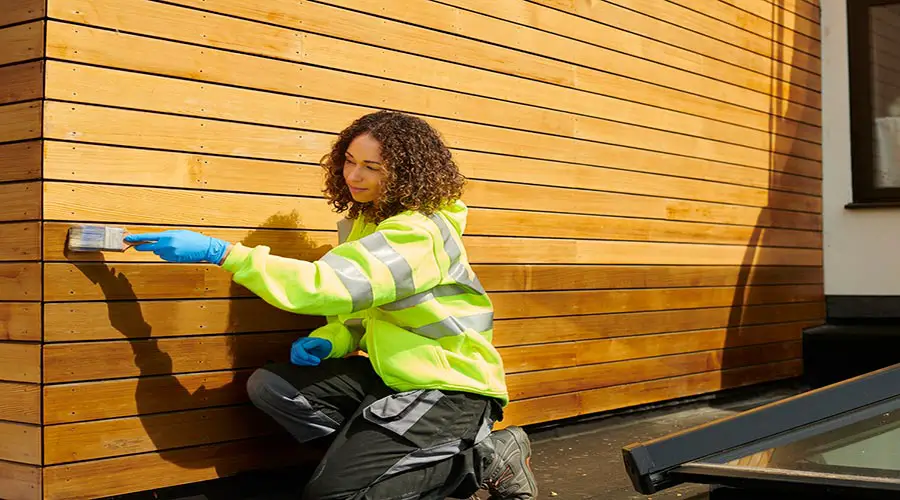
3. Painted Cedar Siding
If you paint the cedar siding the right way, then it can last a good 12 to 15 years before repainting.
Just like staining cedar siding, painting is another excellent way to protect your siding from getting too damaged over the years. You can even paint it any beautiful color you want.
We highly recommend using two coats instead of one for better protection. Some people call this the “two-coat system” for better understanding. The finish coat helps ensure even coverage and true color.
Make sure to use high-quality primers and a top coat of solid color stains or paint.
Note: Using 100% acrylic-latex paint is considered a particular primer coat and protects the wood from the sun and keeps the wood underneath in good condition as time goes on.
If you leave the primer out, there will likely be adhesion issues later down the line, especially if it is weathered wood.
In that case, make sure to paint the wood properly to ensure a longer lifetime.
How Often do You Have to Maintain Cedar Siding?
It is a pain to continuously maintain something specific inside or outside your home. Nobody looks forward to painting or pressure washing your home’s siding constantly, but it has to be done by someone, right?
This answer has a few factors to take into consideration. For instance, where you live matters more than you might think. Are you in an area with constant snow or rainfall, or do you live in a dry place?
Either way, if you need to repaint the siding, then doing so will be anywhere between 5 to 7 years.
If you maintain the siding often (check for mold, mildew, cracks, etc.), you can get by repainting the cedar shingles every 10 years.
Also, if you wish to paint the deck every 10 years, it is wise to consider all environmental factors and adequately prepare the surface before painting.
If you are talking about restaining the cedar shingles, make sure to do so every 3 to 5 years. Again, this has a lot to do with the climate of everything.
So, what are some tips we can provide to you for maintaining cedar siding?
1. Make Sure to Get the Right Paint & Primer Selection
As we went over briefly above, ensure to select 100% acrylic-latex paint for the primer and topcoat.
Having these materials provides weather resistance to the cedarwood. It fills any small holes or imperfections as well.
Note: Make sure the primer is a stain-blocking primer. Remove the siding from your home and get a coat on all sides of the slats. If you cannot do this, make sure to get all exposed areas.
If you have the budget to do so, then get a professional painter to do the job for you. In doing so, they can choose the correct acrylic-latex paint depending on what condition your siding is in.
Another quick note to add is that if you purchase thinner paint, the cedar siding will be more prone to rotting and cracking more quickly than with a thick coat.
2. Properly Apply the Paint or Stain
There are three ways to apply your paint through a spray, brush, or roller.
Although a brush will be the most accurate way of applying a thick coat of paint, it is incredibly time-consuming. The point is to work efficiently and wisely, after all.
Anyways, if you choose to use a roller or spray, then make sure to get all of the parts that you missed with a brush. In doing so, this allows all of the pores and gaps to seal off.
For the recently installed natural cedar siding, make sure to wait no longer than two weeks after installation to paint it with whatever natural wood color you desire. Painting it early on will lessen the chance of the sun and weather having the best of it.
If you have visible damage to cedar siding or it’s relatively old, hiring a professional may be your best chance. In doing so, they will adequately remove dirt, mold, or loose wood fibers that have accumulated over time. They can also repair damage to cedar siding before applying a coat of paint or stain.

What are the Advantages & Disadvantages of Cedar Wood?
There are many pros and cons of cedar siding, so let us get to them below.
Advantages
First, we will delve into the benefits of cedar siding.
1. Cedar Wood Contains a Good Curb Appeal
As the words above state above, cedar shingles provide an excellent visual appeal and architectural style. Not only are they trendy among the softwood family, but they smell very friendly and make your home look unique from others surrounding you.
2. There are Many Styles to Choose From
You can choose multiple styles with cedar siding. Some of these examples are:
- Patterned shingles
- Shakes
- Straight edge shingles
- Bevel
- Log
- Tongue and groove
- Shiplap
The list goes on and on. You can be highly creative with whichever ones you choose for your home. Cedar also receives solid color stains very well, which is typically a homeowner’s request.
If you choose white cedar, it will age very well and grow more beautiful as the years pass.
However, all cedar turns into a grayish look if you leave it untreated, which is why power washing and painting the wood is essential to keep it going.
3. Cedar Wood is Good for the Environment
When you hear the word “environmentally-friendly,” do your ears perk up just like mine? Well, cedar siding is an excellent choice for the environment.
If you choose artificial siding, like vinyl siding, then it is harder to recycle and produce.
However, cedarwood takes little energy to produce and is relatively easy to recycle.
Not only that, but cedar siding is biodegradable, regardless of whether you take the proper care of it or not.
4. Provides Good Insulation
In most cases, siding does not usually insulate your home. However, cedar siding is an excellent insulation source within your house; hence you will save more money on utility bills.
Not only that, but cedar shingles reduce the amount of noise coming inside your home.
Disadvantages
Now we will discuss the disadvantages of cedar siding.
1. Cedar Siding Can Rot & Get Insects
Insects typically steer away from cedar, but it does not mean bugs cannot get into it still. The wood loses its color as the years pass eventually rot over time.
Because it decays after a while, moisture, dirt, and debris seep into the wood, and eventually, mold grows into the cracks.
To prevent this from happening, make sure to keep proper maintenance up by sealing and cleaning the cedar shingles up.
2. Can be a Risk for Fires
Although wood is excellent for an aesthetic appeal, it is not flame-resistant or flame-retardant.
However, homeowners often will treat their cedar shakes with a flame retardant to reduce the chances of fire.
Although it is understandable, one must know that they can no longer go into landfills once you treat them with flame-retardant.
Before using cedar shakes on your home, it is wise to check with your city ordinance and HOA rules and regulations because some places have them banned.
3. It is Costly to Aquire
As mentioned previously, cedar siding can be a bit high in price. You might ask yourself if it is worth purchasing if it is not in your budget. On the contrary, the pros may outweigh the cons for you.
4. Cedar Siding Requires Much Maintenance
Suppose you live in an area that gets a lot of moisture. In that case, you will probably need to stain it yearly.
Even if that is not the case, you must power wash the cedar siding every few years, which can be relatively demanding on you and your family.
On the contrary, you can easily allow it to age naturally, but as we mentioned above, it can become a fire hazard and may not be worth it in the end.
Conclusion
Cedar siding lasts a relatively long time if you maintain and properly take care of it. Overall, it is an excellent choice for your curb appeal, and you will not be disappointed with how your home looks after getting it!
Sources
- How Long Does Cedar Siding Last on a House?
- How Often Does Cedar Siding Need to be Painted?
- Cedar Siding Pros and Cons



